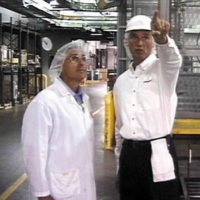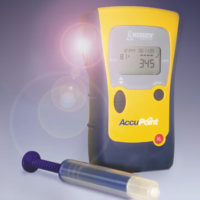Making ATP Monitoring Affordable Pays Dividends

ATP monitoring has changed the way food safety programs operate, delivering real-time sanitation data on the spot, enabling cleaning teams to make informed decisions instantly about the cleanliness of equipment. Unlike traditional culture tests that take 24 to 48 hours to grow, ATP tests deliver results in 15 seconds, alerting sanitation staff to the presence of bacteria and organic materials before they sanitize. “This saves money because they aren’t wasting expensive sanitizing chemicals on equipment that hasn’t been properly cleaned,” says Joellen Feirtag, Associate Professor of Food Science and Nutrition at the University of Minnesota and a food science specialist.
“It’s also a great training tool because they get immediate feedback on whether equipment has been cleaned correctly.” If there’s a positive test result, the cleaning crew can go back and ask themselves what they missed or did wrong. “It teaches them to do it right because they get real time results,” she says. “If they had to wait two days for tests to come back they wouldn’t be able to remember what they did differently.”
It also eliminates the danger of processing food for 48 hours with equipment that hasn’t been properly cleaned, Fiertag adds. “Sanitation is a major factor in every outbreak of foodborne illness. ATP monitoring can prevent that.”
However, the prohibitive cost of ATP monitoring equipment and swabs means that smaller organizations can’t always take advantage of the technology. “Making it more affordable would have a huge impact on smaller food companies and food service operations,” Feirtag says. “The choice to do or not to do ATP monitoring is often economical.” Most ATP systems cost upwards of $4,000 and the test swabs cost $2.50 each. “That’s prohibitively expensive for some operations.”
However, Hygiena, a designer and manufacturer of testing devices for rapid and traditional microbiological methods and hygiene monitoring, now offers a palm-sized ATP luminometer, called the systemSURE II, for only $800 with Ultrasnap test swabs that cost $1.87 apiece or less, depending on quantities (www.hygienaUSA.com). Designed to be easy to use and low-cost without compromising performance, the Hygiena instrument brings a simple, affordable hygiene monitoring system to all food processors, handlers and inspectors. Hygiena also makes a line of ATP swabs called Snapshot that work in almost every luminometer, allowing food companies to use a less expensive test with their existing equipment. “At that price, ATP monitoring becomes affordable for everyone,” Feirtag says.
It’s a reasonable amount of money to invest in sanitation and the cost is covered in the savings from using less sanitizing chemicals. “The equipment pays for itself again and again.”
Juice Company Gains the ATP Advantage
Dan Mapes, Vice President of Quality Assurance at Tampico USA, a juice drinks manufacturer, agrees. “The systemSURE II is a good quick tool that assesses sanitation instantly and the results are clear and easy to read. It sends up a warning flag if something was missed.”
Tampico outsources its mixing and bottling to nearly 150 different facilities around the country. Most are licensed dairies that are already doing some ATP testing at the start-up of filling lines, but some of them are independently owned drink manufacturers that are only just learning about the value of the tools.
Mapes is a big fan of ATP monitoring as an ongoing part of an overall sanitation program but he understands that it is an expensive choice for some facilities. When he learned of Hygiena’s new, less expensive equipment and retrofit swabs, he was excited about the price, but he was cautious, wanting to be sure that it would be as reliable as the other more expensive brands. He field tested Hygiena’s equipment and swabs against the equipment he was currently using at Tampico headquarters. The test showed that the two brands delivered nearly identical results. “I realized we could get the same valuable sanitation information for a much lower cost,” he says.
Not only was he eager to implement the systemSURE II and Snapshot swabs at Tampico’s own facilities, he saw the new, lower cost tools as an opportunity to encourage some of his smaller bottlers to add ATP monitoring to their food safety programs and to urge the dairies to use it more often and across their facilities. “It’s a great troubleshooting tool beyond just the once daily check,” Mapes points out. “I’m trying to work on instilling the need for routine checks of all points in the process, from tanks, lines and pumps to connections and air valves. You just can’t take for granted that equipment is being properly sanitized.”
Looking for a reprint of this article?
From high-res PDFs to custom plaques, order your copy today!








